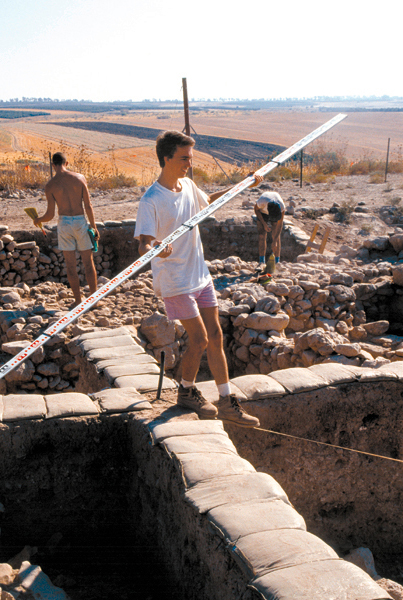
Abila of the Decapolis
Abila was a member of the Decapolis, a confederation of ten Hellenized cities in northeastern Palestine, in the former territory of the half-tribe of Manasseh (Numbers 32:33–40). Inhabited from about 3500 B.C. to 1450 A.D., Abila is located east of the Sea of Galilee in Jordan, about 75 miles north of Amman. It is mentioned in several ancient sources, including Polybius, Pliny the Elder and the geographer Ptolemy.
The site includes two mounds: Tell Abila on the north and Kirbet Umm el-‘Amad (“Ruins of the Mother of the Columns”) on the south. Among the significant finds are a marble statue of Artemis (first century B.C.), five Byzantine churches (of which a cruciform church has been restored), a cache of early Church-era glass lamps, tombs and a theater. Dig director W. Harold Mare (Covenant Theological Seminary) plans to expand the excavation in 2003 to include remains from the Iron and Bronze Ages as well as from the Roman and Byzantine periods. The excavation is open to visitors “all the time.”
Assawir
Located 8 miles east of Caesarea, Tel Assawir lies on what was once the important Wadi ‘Ara road, the path through the Carmel mountains that Pharaoh Thutmose III took to attack Meggido (c. 1482 B.C.).
Already a library member? Log in here.
Institution user? Log in with your IP address.

